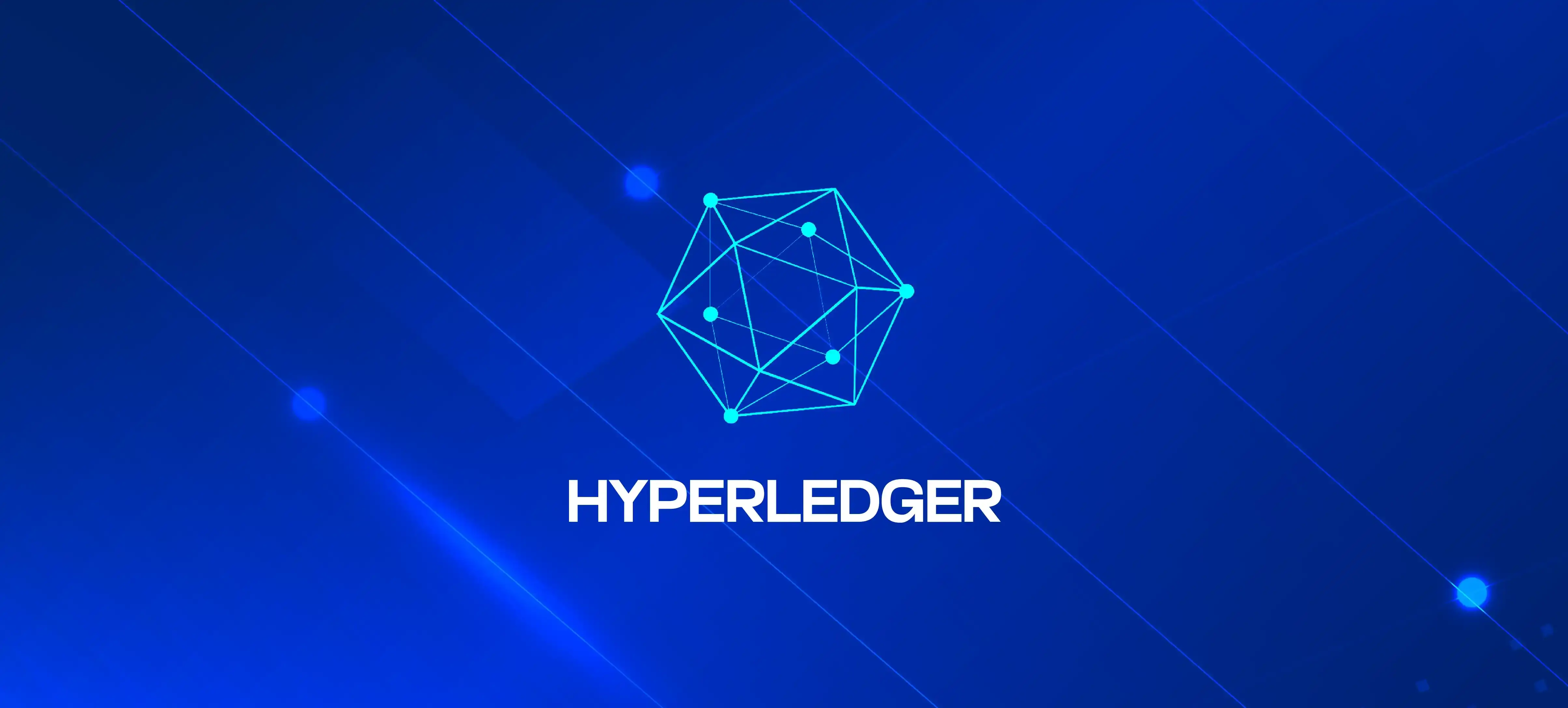
What is an ICO? Understanding Initial Coin Offering
Table of Contents
Introduction to initial coin offering( ICO)
An ICO, also known as a Token Sale or Token Offering, allows projects to issue and distribute their own digital tokens to investors in exchange for funds. These tokens are usually built on a blockchain platform like Ethereum and serve various purposes within the project ecosystem.
What is an ICO?
An ICO, or Initial Coin Offering, is a fundraising method used by cryptocurrency and blockchain projects or startups. It involves issuing and selling a new digital token or cryptocurrency to investors and contributors in exchange for established cryptocurrencies such as Bitcoin (BTC), Ethereum (ETH), or sometimes traditional currencies such as the US dollar.
How do ICOs differ from traditional fundraising methods?

Global Availability: ICOs enable international participation, while traditional methods are often limited by geography or accreditation.
Democratization: ICOs allow individuals regardless of background to invest and democratize access to early-stage projects traditionally limited to wealthy investors.
Tokenization: ICOs issue digital tokens representing public services or ownership, while traditional methods involve equity or debt securities.
Disintermediation: ICOs eliminate middlemen and facilitate direct transactions between projects and investors without the need for banks or venture capital firms.
Speed and efficiency: ICOs offer a quick and efficient way to raise capital compared to the lengthy processes of traditional fundraising.
Liquidity and tradability: ICO tokens are often listed on exchanges, which provides liquidity and tradability unlike traditional methods.
Understanding The ICO Process
Understanding the ICO process is crucial in many ways. A lot of things are involved like smart contracts, token security, token mechanics, and fund management.
The role of smart contracts in High Performance Blockchain ICOs.
Smart contracts play a key role in Initial Coin Offerings (ICOs) by automating and streamlining various aspects of the fundraising process. These self-signed digital contracts define the terms of the token sale, including creation, distribution, and investor protection.
They ensure fair treatment of participants, transparent fund management and secure token sale mechanisms. Smart contracts act as escrow agents, holding funds until predefined conditions are met and automating the distribution of tokens to investors. By providing a trusted and efficient framework, smart contracts increase transparency, security and efficiency in ICOs, revolutionizing the way fundraising events are organized in the cryptocurrency industry.
Pre-ICO and ICO stages
There are two stages of ICO, pre-ico stage, public ICO stage.

Pre-ICO Stage:
The Pre-ICO phase, also known as the Pre-Sale phase, goes before the main ICO and involves offering tokens to a limited group of early investors, usually with discounted prices or additional bonuses. The prime purpose of the Pre-ICO is to raise initial funds and generate early interest in the project. It serves as a precursor to the public ICO, allowing early backers and strategic partners to contribute before the general public.
During the Pre-ICO phase, the project team usually sets a minimum funding goal, defines token allocation and pricing, and sets any specific conditions for early investors. The Pre-ICO phase provides an opportunity to secure funding, improve the project and get valuable feedback before the full public ICO.
ICO Public Stage:
Public ICO, referred to as Token Sale or Crowdsale, is the primary phase of an ICO open to the general public. It is a major fundraising event where the project team aims to attract more investors who contribute funds in exchange for project tokens.
During the Public ICO phase, the project team typically launches a dedicated ICO website, publishes a whitepaper detailing the project's goals and technology, and implements a smart contract that governs the issuance and distribution of tokens. Marketing efforts are being intensified to reach a wider audience and increase awareness of the ICO.
Investors participating in a public ICO typically send their contributions in the form of established cryptocurrencies (such as bitcoin or ethereum) to a wallet address designated by the project. In return, they will receive project tokens based on a predetermined exchange rate and token allocation rules specified in the smart contract.
The Public ICO phase aims to achieve the project's funding goals, build a supportive community, and distribute tokens to a diverse group of investors. It often has a fixed duration with a start and end date during which interested participants can contribute and become token holders.
Both the Pre-ICO and Public ICO phases are crucial for raising funds, establishing token distribution, and gaining support for the project. However, a pre-ICO is usually a more limited offering aimed at early investors, while a public ICO is the primary stage that allows for wider participation by the general public.
Benefits and Potential of ICO’s

-
Accessibility: Opening up investment opportunities to a global audience.
-
Efficient fundraising: Streamlining the capital-raising process for startups.
-
Token economy: Enabling new business models and incentivizing network participation.
-
Liquidity and tradability of tokens: Allowing businesses to trade and liquidate tokens near-immediately.
Notable Successful ICOs & Their Impact on the Blockchain Industry
Ethereum (ETH): Ethereum's 2014 ICO is by far the most influential and successful ICOs to date. It introduced the concept of smart contracts and allowed developers to build dApps on its blockchain. Ethereum's ICO raised more than $18 million, paving the way for a new generation of decentralized finance (DeFi) blockchain projects, protocols and applications.
Ripple (XRP): Ripple's 2013 ICO aimed to revolutionize cross-border payments using blockchain technology. The Ripple network and its native digital asset XRP have gained popularity for their potential to improve the efficiency of global remittances. While Ripple faced regulatory challenges, its ICO highlighted the potential of blockchain to transform traditional financial systems.
EOS (EOS): EOS conducted an all time most successful ICOs in history, raising approximately $4 billion in 2018. EOS aims to provide a platform for building scalable dApps. Its ICO attracted attention due to its ambitious goals and the involvement of well-known blockchain experts. The success of EOS's ICO highlighted the demand for scalable blockchain solutions and encouraged the development of alternative blockchain ICO platforms.
Emerging Trends and Potential Innovations in The ICO Space
Security Token Offerings (STOs): STOs are gaining traction as a regulatory-compliant alternative to traditional ICOs. Further, STOs provide the benefits of tokenization while complying with securities regulations, offering increased investor protection and access to a broader investor base.
Regulatory frameworks: Authorities and regulators are constantly developing frameworks to govern ICOs and protect investors. Establishing clear guidelines and standards for conducting ICOs can increase transparency, reduce fraud, and embrace investor confidence in a safer environment.
Tokenization of real world assets: Tokenization of traditional assets such as real estate, art or commodities is gaining attention. This allows for fractional ownership, increased liquidity and easier transferability of these assets, opening up new investment opportunities.
Improved Investor Protection: Innovations in ICO platforms focus on improving investor protection. Features such as escrow services, smart contract auditing and improved KYC/AML procedures are being developed to mitigate risk and increase trust between issuers and investors.
Platform Diversification: ICO platforms are expanding beyond Ethereum to other blockchain networks, offering more options for token creation and fundraising. This diversification allows projects to choose the platform that best suits their needs in terms of scalability, transaction speed, and smart contract capabilities.
Initial Exchange Offerings (IEOs): IEOs involve token sales conducted directly on cryptocurrency exchanges. These offerings benefit from the exchange's existing user base and compliance infrastructure, potentially increasing investor participation and liquidity.
Security and Audit Solutions: The development of advanced security measures and smart contract audit tools aims to address vulnerabilities and increase ICO security. These solutions help identify potential risks, code vulnerabilities and ensure the integrity of smart contracts.
Tokenomics Innovations: Innovations in tokenomics, including token design and distribution, are explored. This includes concepts such as staking mechanisms, token buybacks, revenue-sharing models and governance structures to align the interests of token holders and project’s success.
DeFi Integration: Integrating ICOs with decentralized finance (DeFi) protocols enables more sophisticated token mechanisms, liquidity options, and decentralized fundraising models. DeFi-based ICOs empower trusted and transparent participation and open new opportunities for raising funds and creating value.
It is important to note that the ICO space is rapidly evolving and the regulatory environment continues to evolve along with it. Staying abreast of industry developments and collaborating with legal and regulatory professionals can help you successfully navigate these trends and innovations.
Conclusion
Initial Coin Offerings (ICOs) have a significant role in the blockchain industry, offering a decentralized and innovative fundraising method for crypto projects. While ICOs have tackled challenges and evolved over time, they have demonstrated the potential to disrupt traditional fundraising models and open up new opportunities for both investors and project founders.
However, it is essential to approach ICOs with caution and perform thorough due diligence. The evolving regulatory environment requires compliance with legal requirements and measures to protect investors. Engaging lawyers and financial professionals with expertise in blockchain and ICOs can provide guidance and ensure compliance.
As the ICO landscape continues to mature, new trends such as Security Token Offerings (STOs), regulatory frameworks, asset tokenization and increased investor protection are shaping the future. Innovations in tokenomics, platform diversification, and integration with decentralized finance (DeFi) further expand the possibilities of fundraising and value creation.
Ultimately, the ICO blockchain landscape presents exciting opportunities for innovation, investment and advancement in blockchain technology. By carefully navigating this landscape, individuals can make informed decisions and contribute to the growth and success of promising projects.
Table of Contents
Introduction to initial coin offering( ICO)
An ICO, also known as a Token Sale or Token Offering, allows projects to issue and distribute their own digital tokens to investors in exchange for funds. These tokens are usually built on a blockchain platform like Ethereum and serve various purposes within the project ecosystem.
What is an ICO?
An ICO, or Initial Coin Offering, is a fundraising method used by cryptocurrency and blockchain projects or startups. It involves issuing and selling a new digital token or cryptocurrency to investors and contributors in exchange for established cryptocurrencies such as Bitcoin (BTC), Ethereum (ETH), or sometimes traditional currencies such as the US dollar.
How do ICOs differ from traditional fundraising methods?

Global Availability: ICOs enable international participation, while traditional methods are often limited by geography or accreditation.
Democratization: ICOs allow individuals regardless of background to invest and democratize access to early-stage projects traditionally limited to wealthy investors.
Tokenization: ICOs issue digital tokens representing public services or ownership, while traditional methods involve equity or debt securities.
Disintermediation: ICOs eliminate middlemen and facilitate direct transactions between projects and investors without the need for banks or venture capital firms.
Speed and efficiency: ICOs offer a quick and efficient way to raise capital compared to the lengthy processes of traditional fundraising.
Liquidity and tradability: ICO tokens are often listed on exchanges, which provides liquidity and tradability unlike traditional methods.
Understanding The ICO Process
Understanding the ICO process is crucial in many ways. A lot of things are involved like smart contracts, token security, token mechanics, and fund management.
The role of smart contracts in High Performance Blockchain ICOs.
Smart contracts play a key role in Initial Coin Offerings (ICOs) by automating and streamlining various aspects of the fundraising process. These self-signed digital contracts define the terms of the token sale, including creation, distribution, and investor protection.
They ensure fair treatment of participants, transparent fund management and secure token sale mechanisms. Smart contracts act as escrow agents, holding funds until predefined conditions are met and automating the distribution of tokens to investors. By providing a trusted and efficient framework, smart contracts increase transparency, security and efficiency in ICOs, revolutionizing the way fundraising events are organized in the cryptocurrency industry.
Pre-ICO and ICO stages
There are two stages of ICO, pre-ico stage, public ICO stage.

Pre-ICO Stage:
The Pre-ICO phase, also known as the Pre-Sale phase, goes before the main ICO and involves offering tokens to a limited group of early investors, usually with discounted prices or additional bonuses. The prime purpose of the Pre-ICO is to raise initial funds and generate early interest in the project. It serves as a precursor to the public ICO, allowing early backers and strategic partners to contribute before the general public.
During the Pre-ICO phase, the project team usually sets a minimum funding goal, defines token allocation and pricing, and sets any specific conditions for early investors. The Pre-ICO phase provides an opportunity to secure funding, improve the project and get valuable feedback before the full public ICO.
ICO Public Stage:
Public ICO, referred to as Token Sale or Crowdsale, is the primary phase of an ICO open to the general public. It is a major fundraising event where the project team aims to attract more investors who contribute funds in exchange for project tokens.
During the Public ICO phase, the project team typically launches a dedicated ICO website, publishes a whitepaper detailing the project's goals and technology, and implements a smart contract that governs the issuance and distribution of tokens. Marketing efforts are being intensified to reach a wider audience and increase awareness of the ICO.
Investors participating in a public ICO typically send their contributions in the form of established cryptocurrencies (such as bitcoin or ethereum) to a wallet address designated by the project. In return, they will receive project tokens based on a predetermined exchange rate and token allocation rules specified in the smart contract.
The Public ICO phase aims to achieve the project's funding goals, build a supportive community, and distribute tokens to a diverse group of investors. It often has a fixed duration with a start and end date during which interested participants can contribute and become token holders.
Both the Pre-ICO and Public ICO phases are crucial for raising funds, establishing token distribution, and gaining support for the project. However, a pre-ICO is usually a more limited offering aimed at early investors, while a public ICO is the primary stage that allows for wider participation by the general public.
Benefits and Potential of ICO’s

-
Accessibility: Opening up investment opportunities to a global audience.
-
Efficient fundraising: Streamlining the capital-raising process for startups.
-
Token economy: Enabling new business models and incentivizing network participation.
-
Liquidity and tradability of tokens: Allowing businesses to trade and liquidate tokens near-immediately.
Notable Successful ICOs & Their Impact on the Blockchain Industry
Ethereum (ETH): Ethereum's 2014 ICO is by far the most influential and successful ICOs to date. It introduced the concept of smart contracts and allowed developers to build dApps on its blockchain. Ethereum's ICO raised more than $18 million, paving the way for a new generation of decentralized finance (DeFi) blockchain projects, protocols and applications.
Ripple (XRP): Ripple's 2013 ICO aimed to revolutionize cross-border payments using blockchain technology. The Ripple network and its native digital asset XRP have gained popularity for their potential to improve the efficiency of global remittances. While Ripple faced regulatory challenges, its ICO highlighted the potential of blockchain to transform traditional financial systems.
EOS (EOS): EOS conducted an all time most successful ICOs in history, raising approximately $4 billion in 2018. EOS aims to provide a platform for building scalable dApps. Its ICO attracted attention due to its ambitious goals and the involvement of well-known blockchain experts. The success of EOS's ICO highlighted the demand for scalable blockchain solutions and encouraged the development of alternative blockchain ICO platforms.
Emerging Trends and Potential Innovations in The ICO Space
Security Token Offerings (STOs): STOs are gaining traction as a regulatory-compliant alternative to traditional ICOs. Further, STOs provide the benefits of tokenization while complying with securities regulations, offering increased investor protection and access to a broader investor base.
Regulatory frameworks: Authorities and regulators are constantly developing frameworks to govern ICOs and protect investors. Establishing clear guidelines and standards for conducting ICOs can increase transparency, reduce fraud, and embrace investor confidence in a safer environment.
Tokenization of real world assets: Tokenization of traditional assets such as real estate, art or commodities is gaining attention. This allows for fractional ownership, increased liquidity and easier transferability of these assets, opening up new investment opportunities.
Improved Investor Protection: Innovations in ICO platforms focus on improving investor protection. Features such as escrow services, smart contract auditing and improved KYC/AML procedures are being developed to mitigate risk and increase trust between issuers and investors.
Platform Diversification: ICO platforms are expanding beyond Ethereum to other blockchain networks, offering more options for token creation and fundraising. This diversification allows projects to choose the platform that best suits their needs in terms of scalability, transaction speed, and smart contract capabilities.
Initial Exchange Offerings (IEOs): IEOs involve token sales conducted directly on cryptocurrency exchanges. These offerings benefit from the exchange's existing user base and compliance infrastructure, potentially increasing investor participation and liquidity.
Security and Audit Solutions: The development of advanced security measures and smart contract audit tools aims to address vulnerabilities and increase ICO security. These solutions help identify potential risks, code vulnerabilities and ensure the integrity of smart contracts.
Tokenomics Innovations: Innovations in tokenomics, including token design and distribution, are explored. This includes concepts such as staking mechanisms, token buybacks, revenue-sharing models and governance structures to align the interests of token holders and project’s success.
DeFi Integration: Integrating ICOs with decentralized finance (DeFi) protocols enables more sophisticated token mechanisms, liquidity options, and decentralized fundraising models. DeFi-based ICOs empower trusted and transparent participation and open new opportunities for raising funds and creating value.
It is important to note that the ICO space is rapidly evolving and the regulatory environment continues to evolve along with it. Staying abreast of industry developments and collaborating with legal and regulatory professionals can help you successfully navigate these trends and innovations.
Conclusion
Initial Coin Offerings (ICOs) have a significant role in the blockchain industry, offering a decentralized and innovative fundraising method for crypto projects. While ICOs have tackled challenges and evolved over time, they have demonstrated the potential to disrupt traditional fundraising models and open up new opportunities for both investors and project founders.
However, it is essential to approach ICOs with caution and perform thorough due diligence. The evolving regulatory environment requires compliance with legal requirements and measures to protect investors. Engaging lawyers and financial professionals with expertise in blockchain and ICOs can provide guidance and ensure compliance.
As the ICO landscape continues to mature, new trends such as Security Token Offerings (STOs), regulatory frameworks, asset tokenization and increased investor protection are shaping the future. Innovations in tokenomics, platform diversification, and integration with decentralized finance (DeFi) further expand the possibilities of fundraising and value creation.
Ultimately, the ICO blockchain landscape presents exciting opportunities for innovation, investment and advancement in blockchain technology. By carefully navigating this landscape, individuals can make informed decisions and contribute to the growth and success of promising projects.
FAQS
The working of ICO is similar to traditional fundraising. When someone decides to inaugurate an ICO, they first need to state the purchase procedure, rules, and date prior to ICO launch. In many cases, ICO investors can contribute using other crypto currencies, some ICOs also accept fiduciary money.
The buying process involves sending investments to respective crypto wallets. However, the number and price of token sold during ICOs can be variable or fixed, depending on the rules.
An ICO is used to raise capital for cryptocurrency startups by issuing and selling digital tokens to the public. These tokens serve various purposes within the project's ecosystem, such as accessing platform services, representing ownership rights, or providing incentives. However, the regulatory landscape has evolved to protect investors from scams, leading some projects to explore alternative fundraising methods like STOs or IEOs.
The legality of Initial Coin Offerings (ICOs) varied by country. Some jurisdictions embraced them with specific regulations, while others banned or restricted them due to concerns about scams and investor protection. Always check the latest regulations in your country to ensure compliance.
Some of the prominent advantages of ICOs includes:
-
Access to global capital.
-
Decentralized fundraising process.
-
Broad investor reach.
-
Potential liquidity through token trading.
-
Incentive alignment between investors and project success.
While its disadvantages can be:
-
Lack of regulation and investor protections.
-
High volatility and speculative nature.
-
Potential for scams and fraudulent projects.
-
Limited due diligence by retail investors.
-
Uncertain project viability and market saturation.
There have been numerous initial coin offerings across different industries and use cases. Some notable examples of ICOs are:
-
Ethereum: Ethereum was Launched through ICO in 2015 to raise funds for a decentralized platform for building smart contracts and dApps.
-
Filecoin: File was also launched through ICO back in 2014. It raised over $257 million by offering a decentralized storage network allowing users to rent our their existing excess storage space.
- EOS: EOS raised approximately $4.1billion during its a year long ICO started on june 26, 2017 till June 1, 2018. It offered a decentralized platform for building scalable and high performing dApps.





